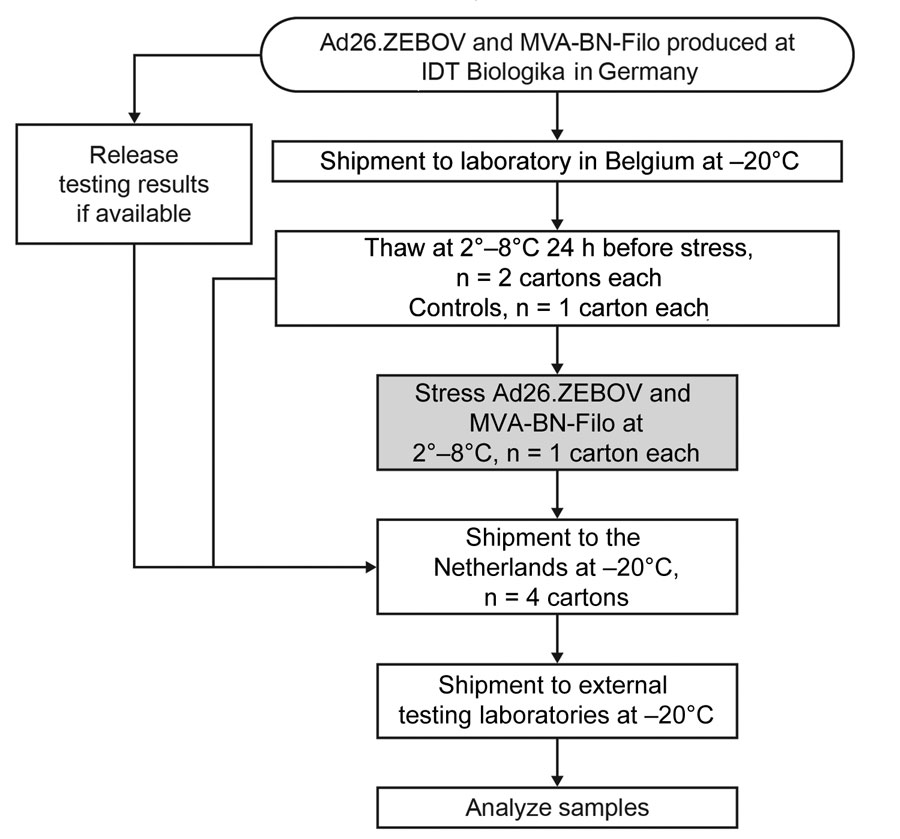Volume 30, Number 4—April 2024
Dispatch
Effects of Shock and Vibration on Product Quality during Last-Mile Transportation of Ebola Vaccine under Refrigerated Conditions1
Figure

Figure. Study design to assess effects of shock and vibration on last-mile transportation of Ad26.ZEBOV/MVA-BN-Filo regimen Ebola vaccine regimen under refrigerated conditions. Ad26.ZEBOV/MVA-BN-Filo were produced and stored at –85°C to –55°C. Four paperboard cartons, each with 2 thermoformed trays containing 10 vials, were shipped to the simulation test laboratory at –20°C. The vials were thawed at 2°–8°C 24 h before testing and packed into insulated shipping containers designed to maintain an internal temperature of 2°–8°C for the duration of the study. Half of the vials (20 Ad26.ZEBOV and 20 MVA-BN-Filo) were subjected to simulated distribution testing, and half remained unstressed as controls. Control samples are non–distribution-tested samples exposed to freeze-thaw.
1Preliminary results from this study were presented at the Conference on Public Health in Africa; December 13–15, 2022; Kigali, Rwanda.